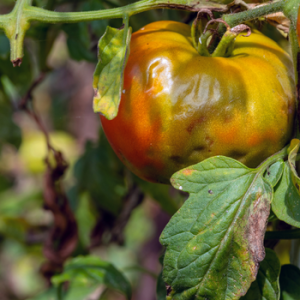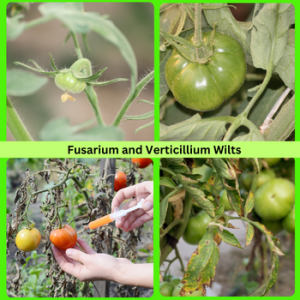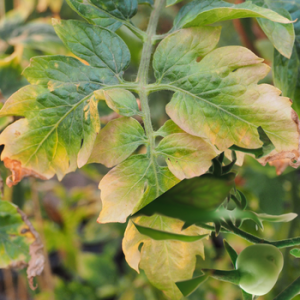Combatting Common Tomato Plant Diseases: Organic Solutions
Introduction
Tomato plants, while rewarding, are susceptible to a range of diseases. Recognizing these diseases early and treating them with organic and natural methods can ensure a healthy, bountiful harvest. This article will guide you through the most common diseases affecting tomato plants and how to combat them organically.
1. Early Blight:
Early blight, caused by the fungus Alternaria solani, is characterized by dark, concentrically ringed spots on older leaves. It can lead to leaf drop and reduced fruit yield.
Organic Treatment:
Remove affected leaves and avoid overhead watering to prevent the spread of spores. Applying a baking soda spray (1 tablespoon of baking soda, 2.5 tablespoons of vegetable oil, and a gallon of water) can help prevent the spread of early blight.


2. Late Blight:
Late blight, a disease caused by the water mold Phytophthora infestans, presents as dark, water-soaked spots on leaves and fruit. It’s the same disease that caused the Irish Potato Famine and can devastate crops quickly.
Organic Treatment:
Copper fungicides can be effective in controlling late blight. Ensure good air circulation around plants and remove any affected plant material immediately.
3. Septoria Leaf Spot:
This fungal disease causes small, circular spots with gray centers and dark borders on leaves. It can lead to a significant leaf drop.
Organic Treatment: Remove and destroy infected leaves. Apply a neem oil spray as a fungicide and to improve plant health. Ensure good air circulation and crop rotation in subsequent seasons.


4. Fusarium and Verticillium Wilts:
These soil-borne fungal diseases cause yellowing and wilting of leaves, often on one side of the plant. They can be fatal to the plant.
Organic Treatment:
There are no effective organic treatments once a plant is infected. Prevention is key – use disease-resistant varieties and practice crop rotation. Ensure well-drained soil and avoid over-watering.
5. Blossom End Rot:
While technically not a disease but a disorder, blossom end rot is common in tomatoes. It appears as a dark, sunken area on the bottom of the fruit, caused by calcium deficiency.
Organic Treatment:
Maintain consistent moisture levels in the soil and use mulch to reduce water stress. Apply calcium-rich foliar sprays or add eggshells to the soil to increase calcium availability.


6. Tomato Mosaic Virus:
This virus causes mottled green and yellow leaves and distorted fruit. It’s spread by aphids and through contact, often via garden tools.
Organic Treatment:
Remove and destroy infected plants. Wash hands and tools after handling infected plants. Control aphids, which can transmit the virus, using organic insecticidal soaps or neem oil.
Conclusion
Dealing with tomato plant diseases can be challenging, but with early detection and organic treatment methods, you can protect your plants and enjoy a healthy harvest. Remember, prevention through good cultural practices is often the best defense against these diseases.
- Detailed recommendations for soil preparation, staking, pruning and watering
- 260 pictorial and descriptive aids for diagnosing and controlling nutritional, disease and pest issues
- Growing advice for traditional and organic methods in the garden, pots or a greenhouse
- Advice for harvesting, storage and seed saving
- A glossary of Tomato Terms
- Bonus Tomato Diary, Disease Ready Reckoner and Conversion Charts for measurements





